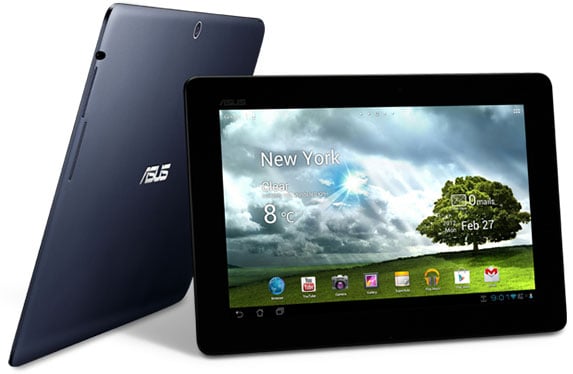ASUS MeMO Pad Smart 10, VivoTab Smart Compared
Introduction and Asus MeMO Pad Smart 10 Specs
What's also interesting in the land of tablets is the emergence of Microsoft's touch-friendly Windows 8/RT software. Microsoft made a concerted effort to build a unified platform that's just as capable on mobile devices (if not more so) than it is on the desktop, and that's given rise to a new generation of Windows hardware, including tablets and hybrids. In addition to the MeMO Pad mentioned above, Asus sent us its VivoTab Smart, another 10.1-inch tablet, only it's built on a x86 foundation and is running a full version of Windows 8 -- gnarly.
It's a tale of twos: Two different tablets running two totally different operating systems on two different architectures. In all reality, they're aimed at two distinct demographics, including one that's more interested in content consumption (MeMO Pad Smart 10) and another that aims to get work done before it's time to play (VivoTab Smart).
Of course, there's some overlap there, and on the following pages we'll compare the two tablets and tell you the pros and cons of each. Let's start with the MeMO Pad Smart 10.

|
| Operating System |
Android 4.2 Jelly Bean |
| Display |
10.1-inch LED backlight WXGA (1280x800) IPS screen, 10-finger multi-touch support |
| Graphics |
GeForce ULP |
| Processor |
NVIDIA Tegra 3 quad-core SoC, 1.2GHz |
| Memory |
1GB DDR3L |
| Internal Storage |
16GB eMMC flash storage + 5GB lifetime Asus Webstorage |
| Wireless Connectivity |
802.11 a/b/g/n Bluetooth v3.0+EDR +A2DP |
| Multimedia |
Dual stereo speakers SRS sound 1.2MP front-facing camera 5MP rear-facing camera w/ auto-focus |
| Ports and Expansion |
Micro USB Micro HDMI 1.4a Micro SD card slot 3.5m headphone/microphone-in combo |
| System Weight |
1.27 pounds (580g) |
| System Dimensions |
10.35 (W) x 7.11 (D) x 0.38 (H) inches (263 x 180.8 x 9.9 mm) |
| Battery |
19Wh Li-polymer battery (8.5 hours) |
| Extras |
G-sensor, gyroscope, e-compass, ambient light sensor, GPS |
| Accessories |
N/A |
| Price |
ASUS MeMO Pad Smart
- $279.99 on Amazon
|
ASUS tapped NVIDIA's Tegra 3 platform to provide its MeMO Pad Smart 10 a performance punch that belies it's entry-level price tag, and we're also excited to see an In-Plane Switching (IPS) panel in this price range, albeit the resolution isn't quite high enough to watch Full HD 1080p movies in their glory.
What ASUS essentially did here was take the features that are commonly found in high-end 7-inch slates and pour them into a 10.1-inch container. In fact, the MeMO Pad Smart 10 is strikingly similar in spec to Google's Nexus 7, hardly surprising since ASUS builds both tablets. It's not a carbon copy, however, as the MeMO Pad Smart 10 is obviously physically bigger, features additional ports, and has a 5MP rear-facing camera.
The ASUS MeMO Pad Smart 10 is large, but is it in charge of the low(er)-cost Android space? Let's find out starting with a closer look the tablet.






